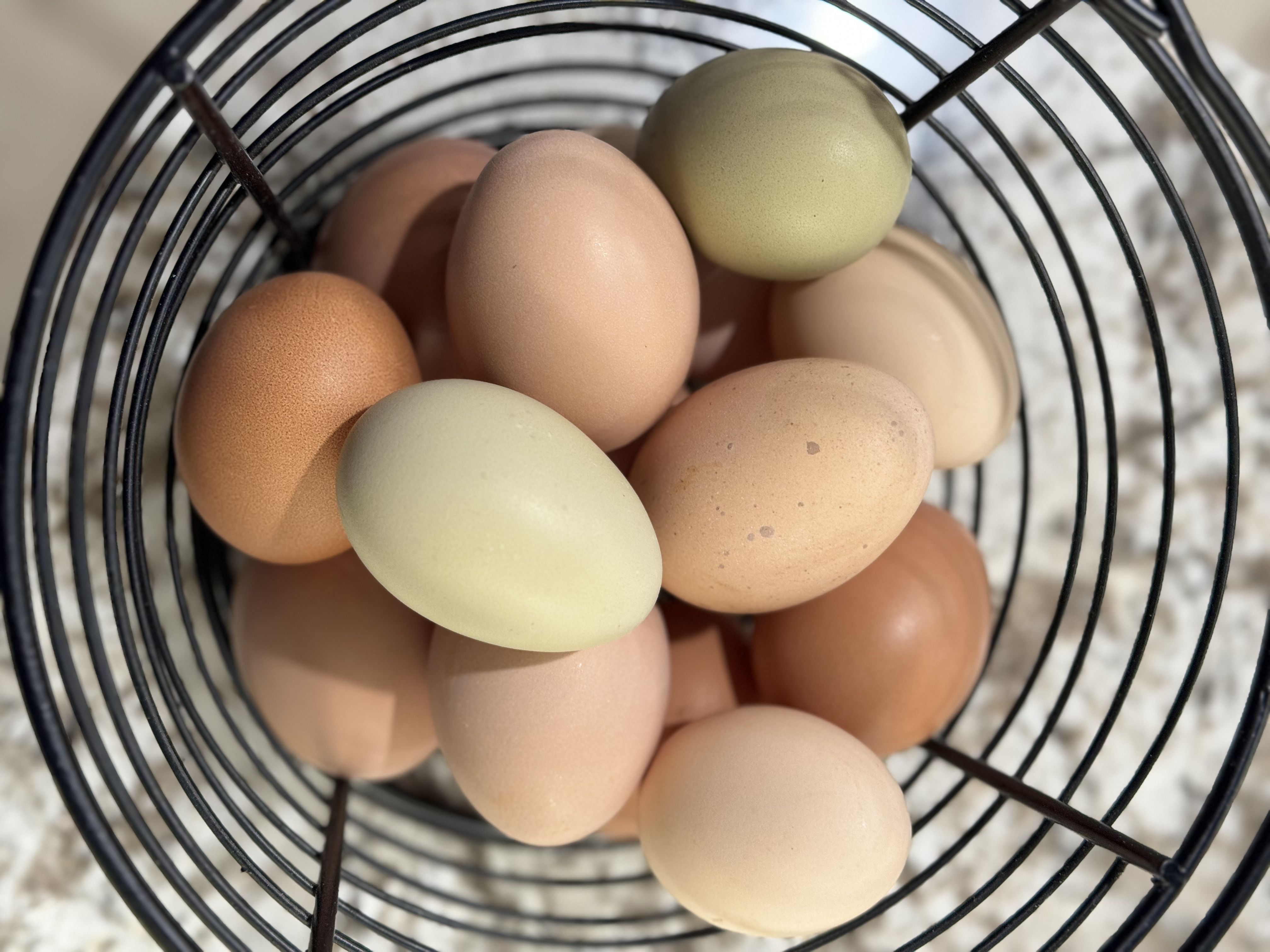
Chicken eggs aren’t just white or brown – in fact, they can come in a rainbow of colors, hues, and even speckled shells. Genetics allow different breeds of chickens to lay their respective colors due to the pigment they release when an egg’s shell is formed. If you’re looking to add variety to your egg basket, look no further than these breeds.
The science of colored eggs
Like a blank canvas, all eggshells start out white. This is because they’re made primarily of calcium. Pigmentation of egg shells then takes place in the hen’s uterus, or “shell gland”. The color of this pigment is determined by genetics, and hens will lay the same color eggs their entire lives. Slight variations in hues is normal, as the “bloom” or cuticle layer of an egg’s shell contains pigment in color-laying breeds. The bloom is applied just before an egg is laid, and its thickness can vary from day to day.
Egg colors may even differ between hens of the same breed, especially in the case of hybrid hens. Easter Eggers are a great example of this. Because they are hybrids resulting from crossing blue and brown egg genetics, each individual hen’s genetics can create variations in eggshell color.
Do colored eggs taste different?
The only factors that affect the taste of chicken eggs are the hen’s diet and the freshness of the egg – color does not affect the flavor of the eggs. Pigmentation does not penetrate beyond the shell and membrane, so egg yolks and albumen (egg white) remain their normal colors.
Best chicken breeds for colorful eggs
Here are the breeds most commonly associated with their respective eggshell colors. Purebred hens will lay the color expected for their breed, while mixed breed hens may be a wild card addition to your egg basket.
Blue eggs
Blue is a natural shade for several breeds of chickens. Pure breeds that produce blue eggs have also been crossed with other breeds to create a wider variety of egg colors. Blue eggs are unique to other colored eggs in that the pigmentation goes all the way through the shell – making the inside of the eggshell appear blue. All other colored eggshells are white on the inside.
Green eggs
Green eggs are the rarest color of chicken eggs. Breeds that lay green eggs are crossed with blue and brown egg layers. Hens that are able to lay green eggs apply a brown pigment over blue-tinted eggs, resulting in their color. The only breed of chicken that lays green eggs “naturally” – that is, without having brown/blue hybrid genetics – are Swedish Isbars.
- Easter Egger
- Favaucana
- Swedish Isbar
- Olive Egger (Maran/Ameraucana crosses)
- Whiting True Green
Cream/pink eggs
Pink eggs are actually very light brown or cream-colored eggs that appear pink after the bloom is applied. The thickness of the bloom determines the vibrancy of the color, with some eggs being a deep pink hue, while others may appear as a faint pastel tone. Breeds that lay cream or light brown colored eggs can produce pink shells.
Brown eggs
Brown eggs are a more commonly seen color, but their shades can vary widely. From light brown to deep chocolate hues, brown eggs are the most diverse of colored eggs. They’re also the second most common egg color, making them popular in both grocery stores and egg baskets.
White eggs
White is the other most common color of chicken eggs. Since all egg shells are white when they’re first formed, white eggs have no pigmentation added as they travel through the laying process. White eggs don’t have many variations in color, they can vary widely in size.
Speckled eggs
Speckled eggs aren’t unique to a certain breed, but rather individual hens. The speckles result from calcium deposits during the shell-forming process, or from shell gland anomalies. If a shell rotates more slowly in the shell gland than it should, the resulting splotches resemble darker spots along the shell – giving them their freckled appearance. It’s hard to predict which hens will lay these, but the breeds most likely to produce speckled eggs are:
- Marans (Cuckoo Marans in particular)
- Barnevelder
- Easter Egger
- Welsummer
Omlet and your eggs
No matter what color eggs your hens add to your basket, collecting fresh eggs daily is part of the delight of keeping chickens. Omlet’s chicken coops provide your flock with secluded nesting boxes for comfortable laying, and easy access for you to gather the fruits of their labor. And after your daily collection, display your hens’ works of art in an egg skelter to add natural beauty and practical egg organization to your kitchen.






Comments
There are no comments just yet